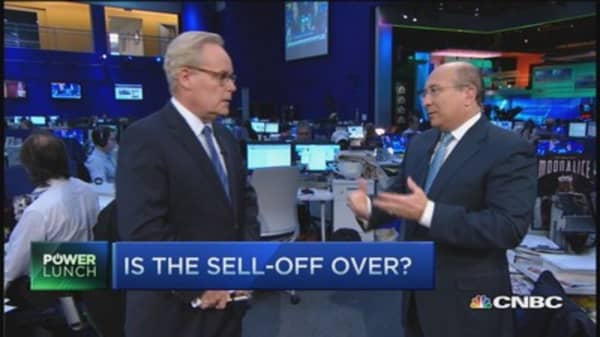When small-cap stocks are outperforming their large-cap brethren, it can be a sign of speculative excess in the market, and when the small stocks start going down …. a sign of a broader correction to come.
We have seen signs of all these divergences leading up to the market's most recent pull back. We've also seen major market averages break below key technical levels, like their 200-day moving averages, a sign of technical weakness, according to Wall Street chart-watchers. Additionally, the number of stocks making new 52-week lows expanded greatly while the market was slip-sliding away last week, while key industry groups, like semiconductors "broke down."
Read More Ugly October: 'Hedge' funds aren't living up to their name
Now that litany of technical indicators, on its own, only tells us that the long-overdue, 10 percent correction has, effectively, come. But despite recent improvements in the major market averages, it is not certain, by any means, that the correction is entirely over.
While the advance/decline line has improved, the number of stocks making new 52-week highs certainly hasn't picked up.
The S&P 500 is bumping back up against its 200-day moving average. What once was a support level for the market, in other words, a level below which it would not go, may now be resistance … a level above which it is difficult to travel. Failure to break meaningfully above the 200-day moving average could mean that more selling is in the offing.
It's all together possible the market put in a tradable, if not investible, bottom at last Wednesday's low; it's also probable that the market has much repair work, technically, to do before one can say with great certainty that the correction has come AND gone.
Read MoreAfter October dip, stocks may be ready for a rip
From peak-to-trough, the DJIA fell about 7.5 percent; the S&P 500, 9.9 percent (from intra-day peak-to-trough), while the Russell 2000 fell about 12 percent and the Nasdaq, 10 percent.
That qualifies, in my book, as a correction.
But there are a number of items to work through going forward before this market is out of the woods:
A sustained move above key technical levels is required, as is an upturn in the A/D Line and in the number of socks making new highs.
Small-caps need to lead large-cap stocks still higher, while the Transports need to lead the Industrials back toward the promised land.
An investor has time to "average in," or buy favored stocks now, in equal dollar amounts, each month, or week, as the market repairs itself. If the maker falls back, an investor's average cost is lower. If the market rallies, the average cost goes up, but so does the market, allowing an investor to profit from a meaningful upturn over time.
It pays to act more like an investor, than a trader, in this type of market. There's no point in being a hero if the correction is not yet over.
Read MoreWhat are stocks doing now? Click here for the latest market action.





